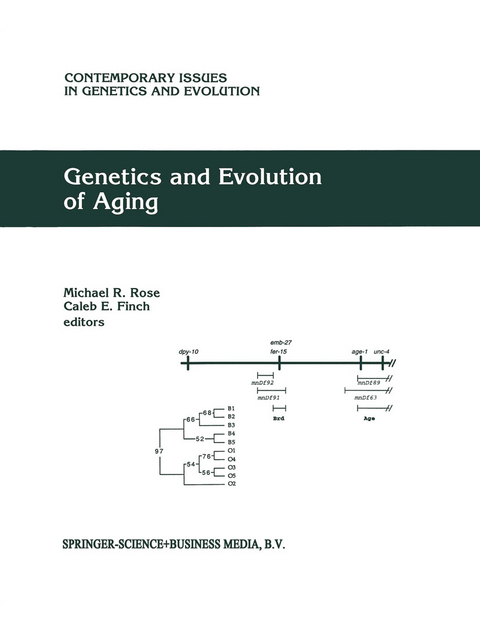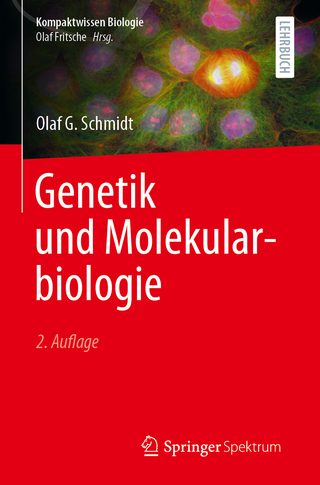
Genetics and Evolution of Aging
Springer (Verlag)
978-90-481-4416-7 (ISBN)
Aging is one of those subjects that many biologists feel is largely unknown. Therefore, they often feel comfortable offering extremely facile generalizations that are either unsupported or directly refuted in the experimental literature. Despite this unfortunate precedent, aging is a very broad phenomenon that calls out for integration beyond the mere collecting together of results from disparate laboratory organisms. With this in mind, Part One offers several different synthetic perspectives. The editors, Rose and Finch, provide a verbal synthesis of the field that deliberately attempts to look at aging from both sides, the evolutionary and the molecular. The articles by Charlesworth and Clark both provide population genetic perspectives on aging, the former more mathematical, the latter more experimental. Bell takes a completely different approach, arguing that aging may not be the result of evolutionary forces. Bell's model instead proposes that aging could arise from the progressive deterioration of chronic host pathogen interactions. This is the first detailed publication of this model. It marks something of a return to the type of aging theories that predominated in the 1950's and 1960's, theories like the somatic mutation and error catastrophe theories. We hope that the reader will be interested by the contrast in views between the articles based on evolutionary theory and that of Bell. MR. Rose and C. E. Finch (eds. ), Genetics and Evolution of Aging, 5-12, 1994. © 1994 Kluwer Academic Publishers. The J aniform genetics of aging 2 Michael R. Rosel & Caleb E.
One: General perspectives on aging.- The Janiform genetics of aging.- Evolutionary mechanisms of senescence.- Mutation-selection balance and the evolution of senescence.- Pathogen evolution within host individuals as a primary cause of senescence.- Two: Diversity of aging.- Comparative approaches to the study of senescence: bridging genetics and phylogenetics.- The genetics of aging in the yeast Saccharomyces cerevisiae.- Evolutionary senescence in plants.- Comparing mutants, selective breeding, and transgenics in the dissection of aging processes of Caenorhabditis elegans.- New model systems for studying the evolutionary biology of aging: crustacea.- Three: Aging in Drosophila.- Evolution of aging: testing the theory using Drosophila.- Population density effects on longevity.- Evolution of delayed reproductive senescence in male fruit flies: sperm competition.- Genetic and environmental factors regulating the expression of an extended longevity phenotype in a long lived strain of Drosophila.- The effect of superoxide dismutase alleles on aging in Drosophila.- Use of recombinant inbred strains to map genes of aging.- The effects of enhanced expression of elongation factor EF-1? on lifespan in Drosophila melanogaster IV. A summary of three experiments.- Two-dimensional protein electrophoretic analysis of postponed aging in Drosophila.- Four: Aging in mammals.- Longevity and fecundity in eutherian mammals.- Thoughts on the evolutionary basis of dietary restriction.- Genetic control of retroviral disease in aging wild mice.- Genetics of life span in mice.- Genes of the major histocompatibility complex and the evolutionary genetics of lifespan.- Genetic influences on glucose neurotoxicity, aging, and diabetes: a possible role for glucose hysteresis.- Genetic heterogeneityof gene defects responsible for familial Alzheimer disease.- Abiotrophic gene action in Homo sapiens: potential mechanisms and significance for the pathobiology of aging.- Antagonistic pleiotropy, mutation accumulation, and human genetic disease.
| Erscheint lt. Verlag | 7.12.2010 |
|---|---|
| Reihe/Serie | Contemporary Issues in Genetics and Evolution ; 3 |
| Zusatzinfo | 6 Illustrations, black and white; VI, 314 p. 6 illus. |
| Verlagsort | Dordrecht |
| Sprache | englisch |
| Maße | 210 x 279 mm |
| Themenwelt | Medizin / Pharmazie ► Medizinische Fachgebiete |
| Studium ► 2. Studienabschnitt (Klinik) ► Humangenetik | |
| Naturwissenschaften ► Biologie ► Biochemie | |
| Naturwissenschaften ► Biologie ► Evolution | |
| Sozialwissenschaften ► Soziologie | |
| ISBN-10 | 90-481-4416-7 / 9048144167 |
| ISBN-13 | 978-90-481-4416-7 / 9789048144167 |
| Zustand | Neuware |
| Haben Sie eine Frage zum Produkt? |
aus dem Bereich


